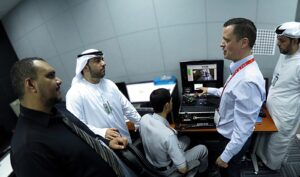Event Security Video Analysis: Best Practices and Techniques
Event security video analysis has become a crucial component in ensuring the safety and security of attendees at various gatherings, from concerts to conferences. Implementing best practices and employing effective techniques can significantly enhance the effectiveness of video analysis systems. In this guide, we’ll explore some key best practices and techniques for event security video analysis.
1. Strategic Camera Placement
Strategically placing surveillance cameras is vital to ensuring comprehensive coverage of the event venue. Key areas to consider include:
- Entry points: Ensure clear footage of individuals entering and exiting the venue.
- Crowd areas: Monitor areas with high foot traffic or where crowds gather to detect any suspicious behavior.
- Perimeter: Cover the perimeter of the venue to monitor for unauthorized access.
2. High-Quality Cameras and Equipment
Invest in high-quality surveillance cameras and equipment capable of capturing clear and detailed footage, even in low-light conditions. Consider factors such as resolution, frame rate, and night vision capabilities to ensure optimal performance.
3. Real-Time Monitoring
Utilize video analysis software that provides real-time monitoring capabilities. This allows security personnel to promptly identify and respond to security threats as they occur, minimizing potential risks.
4. Motion Detection and Object Recognition
Configure the video analysis system to utilize advanced features such as motion detection and object recognition. These technologies can automatically detect and alert security personnel to suspicious activities or unauthorized objects within the event venue.
5. Facial Recognition
Implement facial recognition technology to enhance security measures further. Facial recognition algorithms can identify individuals of interest or track known persons of concern, enabling proactive security measures to be taken.
6. Integration with Access Control Systems
Integrate the video analysis system with access control systems to enhance security protocols. By correlating surveillance footage with access control data, security personnel can verify the identity of individuals entering restricted areas and detect any anomalies or breaches in real-time.
7. Regular Maintenance and Testing
Perform regular maintenance checks and system testing to ensure the smooth operation of surveillance cameras and video analysis software. This includes verifying camera functionality, updating software, and conducting routine calibration to optimize performance.
8. Data Security and Privacy
Prioritize data security and privacy when collecting and storing surveillance footage. Implement encryption protocols, access controls, and secure storage solutions to safeguard sensitive information and comply with data protection regulations.
9. Training and Education
Provide comprehensive training to security personnel on utilizing video analysis tools effectively. Ensure they understand how to interpret alerts, respond to security threats, and navigate the video analysis software interface efficiently.
10. Continuous Improvement
Regularly evaluate the effectiveness of event security video analysis techniques and processes. Solicit feedback from security personnel, review incident reports, and identify areas for improvement to enhance overall security measures.
By implementing these best practices and techniques, event organizers can maximize the effectiveness of event security video analysis systems, mitigate potential risks, and ensure the safety and security of attendees at all times.



